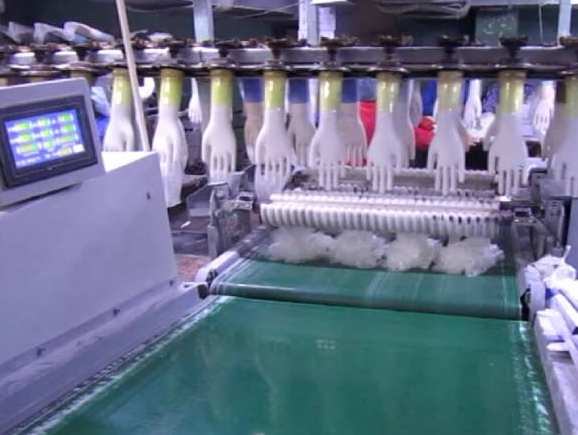The use of medical gloves is part of hand hygiene and occupational protection. Proper use of gloves can promote compliance with hand hygiene and reduce occupational injuries to medical personnel.
The use of gloves in the “Guidelines for Hand Hygiene of Medical Institutions” issued by the World Health Organization in 2009 is:
(1) Wearing gloves is not a substitute for hand hygiene;
(2) Wear gloves when you may come into contact with the patient’s blood and body fluids;
(3) Remove gloves after nursing patients, and change gloves when nursing different patients;
(4) The same patient should change or remove gloves before moving from the polluted part to other parts;
(5) Avoid reusing disposable gloves.
But in daily work, Medical making machine Suppliers often see the following situations:
1. Don’t know which operations require gloves. For example, medical staff wear gloves for non-isolated patients when turning over, patting their backs, changing bed unit supplies, and not wearing gloves for blood collection operations.
2. It is believed that the use of gloves may not perform hand hygiene. For example, medical personnel will replace the operation of gloves with hand hygiene, and consider wearing gloves as a method of washing hands.
3. Do not change gloves. For example, gloves are not changed between different patients, and gloves are not changed or removed from the same patient from a contaminated site to a clean site. And after touching the patient’s contaminated area, wear gloves to continue to touch the patient’s surroundings.

Counting Machine
Indications for use of gloves issued by the World Health Organization:
Instructions for wearing gloves:
1. Before aseptic operation;
2. Regardless of whether it is in a sterile condition before contacting blood and other body fluids, before contacting mucous membranes and incomplete skin;
3. When contacting patients who have taken contact isolation measures and the environment they are in contact with;
Indication of glove removal:
1. When gloves are suspected to be incomplete before gloves are broken;
2. When in contact with blood, body fluids, mucous membranes and incomplete skin;
3. After touching the patient and its surroundings, after touching a contaminated part of a patient’s body;
4. When there are indications for hand hygiene.
The requirements for wearing gloves in the Technical Specifications for Intravenous Therapy Care WS / T433-2013 have the following two points:
1. Cleaning gloves should be used when PVC is implanted, and the principle of maximum sterile barrier should be adhered to when placing PICC.
2. Antitumor drug protection: When dispensing, the operator should wear double gloves (the inner layer is PVC gloves and the outer layer is latex gloves).
Medical glove Gloves equipment provides advice on the need to wear gloves or not:
Operations requiring sterile gloves: surgery, natural delivery, invasive radiation procedures, venipuncture, preparation of intravenous nutrients and chemotherapy drugs.
Operations requiring gloves: Operations that may come in contact with blood, body fluids, secretions, and excreta.
Direct patient contact: contact with blood, incomplete mucosa, contact with infectious dangerous organisms, infectious emergency patients, pre / post IV infusion, blood draws, pelvic and vaginal examinations, tracheal intubation
Indirect contact with patients: dumping vomitus, cleaning equipment, disposing of medical waste, cleaning spilled body fluids.
Gloves-free operation (except for patients in need of contact isolation): No potential exposure to blood, body fluids, and exposure to contaminated environments.
Direct patient contact: blood pressure, body temperature, intradermal and subcutaneous intramuscular injections, dressing the patient, transporting the patient, caring for the eyes and ears (no secretions), and venous operation without risk of blood leakage.
Indirect patient contact: using the phone, writing medical records, issuing oral medications, issuing and receiving patient plates, removing and replacing patient sheets, using non-invasive ventilation and oxygen, and moving ward equipment.
Medical personnel can only ensure medical safety if they correctly and properly “wear” and “remove” gloves and strictly implement hand hygiene.


